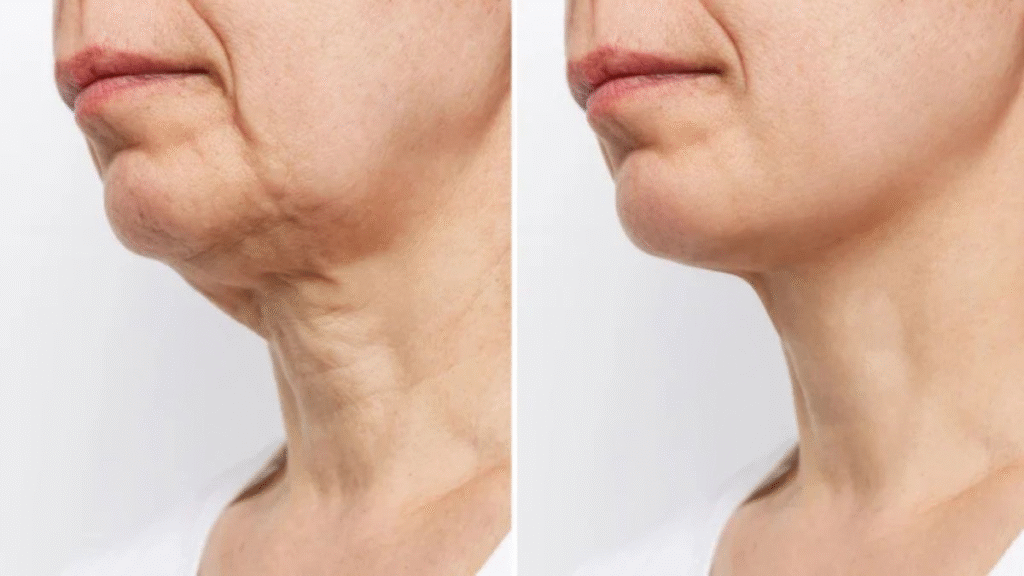Cellulogia: A Complete Guide to Healthier, Smoother, and Stronger Skin
Cellulogia is an advanced and evolving field that focuses on understanding the biological, physical, and environmental factors that shape the texture, firmness, and overall appearance of human skin. Many people only think of issues such as cellulite, sagging, or uneven texture when they appear on their own bodies, but cellulogia helps us understand why these changes happen in the first place. This field goes deeper than traditional skincare by looking at the real internal causes of skin changes, including the behavior of collagen, the structure of fat cells, hormonal influences, cellular aging, connective tissue strength, circulation patterns, and lifestyle habits. By studying these complex processes, cellulogia provides a clear explanation of why skin looks the way it does and offers practical, science-backed ways to improve it naturally.
Cellulogia is not limited to creams or surface-level treatments. Instead, it focuses on the deeper biological systems that eventually show up on the skin’s outer surface. This makes cellulogia especially useful for people who want to understand their skin in a more complete way. Instead of simply following trends or buying random products, cellulogia helps people understand how small daily habits, internal health, and specialized treatments all come together to shape the long-term appearance of their skin.
What Is Cellulogia?
Cellulogia refers to the scientific study of skin texture and the many factors that influence the smoothness, elasticity, and strength of the skin. It focuses on understanding how collagen is formed, how fat cells behave beneath the skin, how connective tissue structures respond to pressure and movement, and how circulation and lymphatic flow support healthy skin. While the word cellulogia may be new to many people, the concept behind it is not. It simply brings together various scientific areas, such as dermatology, physiology, nutrition, and aesthetics, to create a more complete picture of how skin texture changes over time.

In practical terms, cellulogia helps answer important questions. It explains why some people develop dimples or an uneven appearance on their thighs even if they are active and healthy. It clarifies why collagen breaks down with age, why hydration matters so much for skin flexibility, and why hormonal changes can suddenly make the skin look softer or more fragile. With cellulogia, the goal is to understand these processes well enough that people can make better choices about their skin care routines, lifestyle habits, and possible treatments.
Why Cellulogia Matters for Skin Health
Cellulogia matters because it explains the real reasons behind skin texture changes, helping people avoid ineffective solutions and focus on what truly works. Many people struggle with issues such as cellulite, loose skin, and uneven texture without understanding that these problems are often influenced more by biology than by surface-level factors. Cellulogia brings clarity by showing that skin texture is shaped by internal factors such as collagen strength, connective tissue flexibility, fluid retention, fat cell behavior, circulation patterns, and hormonal balance.
Understanding cellulogia empowers individuals to improve their skin health through a combination of healthy habits, smart skincare choices, and scientifically supported treatments. Instead of relying on quick fixes or myths, cellulogia emphasizes long-term strategies that support the body’s natural ability to strengthen and repair the skin. This field also helps people recognize that skin issues do not always reflect poor health or lack of effort. Often, they result from natural processes that everyone experiences at some point in their lives.
The Science Behind Cellulogia
The science of cellulogia is rooted in several key biological systems that influence the appearance and condition of the skin. One of the most important components is collagen, a protein that provides structure, firmness, and elasticity to the skin. Collagen forms a network within the deeper layers of the skin, and when this network weakens due to aging, stress, or poor lifestyle habits, the skin becomes more vulnerable to sagging and uneven texture. Cellulogia explores the most effective ways to stimulate collagen production naturally and through advanced treatments.
Another essential part of cellulogia is the behavior of fat cells. Fat cells sit beneath the surface of the skin and play a major role in shaping its appearance. When these cells expand or shift, or when connective tissues surrounding them tighten or stiffen, dimples and uneven texture can appear. This is why cellulite is not solely related to body weight. Many people with low body fat still experience cellulite because the issue is often caused by the structure of connective tissues rather than the amount of fat present.
Connective tissue is another significant element in cellulogia. These fibrous bands anchor the upper layers of the skin to the layers beneath. When they tighten or pull downward while fat cells push upward, the combination creates dimples on the surface. Cellulogia studies ways to soften, strengthen, and support these tissues through hydration, movement, massage, and targeted treatments.
Circulation also plays a major role in skin health. When blood flow is strong, the skin receives more oxygen, nutrients, and hydration, all of which help maintain its structure. When circulation slows down, the skin may appear dull, swollen, or uneven. Cellulogia looks at natural and scientific ways to improve circulation for better skin texture.
Causes of Uneven Skin Texture in the Context of Cellulogia
Uneven skin texture is influenced by a combination of several factors, and cellulogia provides a scientific explanation for each one. Genetics is one of the most powerful influences, as many people inherit their skin structure from their families. Some individuals naturally have stronger collagen networks, more flexible connective tissues, or more balanced fat distribution, while others may be more prone to dimpling or looseness.
Aging is another major factor that affects the skin. As the body grows older, collagen production slows down, connective tissues become more rigid, and skin thickness decreases. These changes happen gradually but become more noticeable with time. Cellulogia helps explain these patterns and offers solutions to support the body’s natural repair processes.
Lifestyle habits also play a large role. Lack of movement, dehydration, high stress levels, smoking, and a diet low in nutrients can all weaken collagen and affect fat cell behavior. Cellulogia emphasizes long-term lifestyle changes that help the skin stay firm and healthy.
Hormonal changes, especially during puberty, pregnancy, and menopause, are known to influence skin texture. For example, shifts in estrogen levels can change how fat is distributed in the body, which can affect the skin’s appearance. Cellulogia helps people understand how to support their skin through these transitions.
Inflammation and fluid retention contribute to the appearance of uneven skin as well. When the body retains fluid, the skin can appear swollen or bumpy. When inflammation persists, collagen may weaken over time.
Cellulogia and the Role of Collagen
Collagen is one of the most discussed elements in cellulogia because it has such a strong influence on the overall appearance and strength of the skin. It provides the foundation for firmness and helps the skin maintain its shape. When collagen levels are high, the skin looks healthy, smooth, and youthful. When levels drop, the skin begins to sag, wrinkle, or lose elasticity.
Cellulogia explores the many ways collagen can be protected and restored. Diet plays an important role. Foods that contain vitamin C, amino acids, antioxidants, and healthy fats help support natural collagen production. Lifestyle habits such as staying hydrated, protecting the skin from excessive sun exposure, managing stress, and getting enough sleep also help.
Modern treatments also play a role in stimulating collagen. Procedures such as microneedling, laser therapy, and radiofrequency are commonly used because they encourage the skin to repair itself by producing new collagen. Cellulogia combines these scientific insights to help people choose the approaches that work best for their individual needs.
Body Fat Distribution and Cellulogia
Fat distribution is another key area of study within cellulogia. Fat cells are not spread evenly across the body, and their placement can significantly affect the appearance of the skin. For example, women naturally store more fat in the thighs, hips, and buttocks because of hormonal patterns, especially estrogen. This can make cellulite more common in certain areas. Men often have different connective tissue structures, which is why they typically experience cellulite at lower rates.
Cellulogia explains that fat cells can expand or shrink depending on diet, hormones, activity level, and metabolism. However, even when fat is reduced, the underlying structure of connective tissue may still cause dimples or uneven texture. This is why targeting fat alone is not always enough. Cellulogia uses a more complete approach by focusing on collagen, connective tissue flexibility, circulation, and overall skin structure.
How Circulation Affects Skin Texture
Circulation influences the health of the skin in many important ways. When blood flow is strong, the skin gets more oxygen and nutrients, which helps strengthen collagen and maintain elasticity. Good circulation also helps remove waste and excess fluid from the skin, which reduces swelling and puffiness. When circulation is poor, the skin may look dull or uneven, and cellulite may appear more pronounced.
Cellulogia encourages simple steps to improve circulation, such as regular movement, hydration, and skin-stimulating techniques. Even small changes, like taking short walks, staying active during the day, or using gentle massage, can improve blood flow and support healthier skin.
Lifestyle Approaches in Cellulogia
Lifestyle choices are a major part of cellulogia because they influence the internal systems that shape skin texture. A healthy diet that includes fruits, vegetables, lean proteins, and essential fatty acids can reduce inflammation and support collagen production. Staying hydrated allows connective tissues to remain flexible and helps the skin maintain elasticity.
Regular movement is another essential part of cellulogia. Physical activity improves circulation, reduces stress, and supports healthy fat metabolism. Even light activities such as walking, stretching, or low-impact exercises contribute to better skin texture.
Sleep and stress management also influence the skin. High stress increases cortisol levels, which can break down collagen and lead to weaker skin structure. Good sleep supports the body’s natural repair processes, including collagen formation.
Smoking and high sugar intake are harmful to the skin because they accelerate collagen breakdown. Cellulogia encourages avoiding these habits for healthier skin.
How Cellulogia Helps Improve Cellulite Appearance
Cellulite forms when fat cells push upward while connective tissues pull downward, creating a dimpled appearance. Weak collagen, fluid retention, hormonal fluctuations, and inflammation all contribute to the visibility of cellulite. Cellulogia addresses all these factors, offering a more complete solution than simply applying products to the skin.

By strengthening collagen, improving circulation, supporting lymphatic drainage, reducing inflammation, and encouraging healthy fat cell behavior, cellulogia helps reduce the appearance of cellulite over time. While it may not eliminate cellulite entirely, it can significantly improve the smoothness and firmness of the skin.
Cellulogia Treatment Options
Cellulogia supports a combination of treatments depending on individual needs. Topical treatments such as retinol creams, hydrating lotions, and caffeine-based formulas can help improve the surface appearance of the skin, especially when used consistently. Manual techniques such as massage, cupping, dry brushing, and foam rolling help stimulate circulation and lymphatic flow, which reduces fluid retention and supports healthier skin texture.
Professional procedures are also commonly used to support cellulogia. Microneedling, radiofrequency, laser therapy, acoustic wave therapy, and subcision target the deeper layers of the skin where collagen is formed and where connective tissues can be too tight. Non-invasive devices for home use can help maintain results between treatments.
The Future of Cellulogia
Cellulogia continues to grow as researchers discover new ways to support collagen, improve connective tissue health, and regulate fat cell behavior. Future developments may include personalized treatment plans based on genetic information, new approaches to stabilizing fat layers, and more advanced non-invasive technologies that support long-term skin health. As scientific knowledge expands, cellulogia will continue to offer safer and more effective ways to improve the skin naturally.
Common Myths About Cellulogia
There are several myths that cellulogia helps correct. One common myth is that only overweight people get cellulite, but in reality, cellulite is related to connective tissue structure, not just fat. Another myth is that cellulite can be removed completely, when in fact, most improvements focus on reducing its appearance rather than eliminating it entirely. A final myth is that cellulite is only a cosmetic problem, even though it often reflects deeper biological processes such as hormonal changes and circulation issues.
How to Apply Cellulogia in Everyday Life
Applying cellulogia principles in daily life does not require expensive products or treatments. Simple habits such as staying hydrated, eating nutrient-rich foods, protecting the skin from excessive sun exposure, sleeping well, and staying active all contribute to healthier skin. Gentle massage techniques, skincare products that support collagen, and stress management also help improve the skin’s long-term appearance.
Conclusion
Cellulogia offers a powerful and comprehensive way to understand the deeper forces that shape our skin’s texture, firmness, and overall appearance. Instead of focusing only on surface-level treatments, cellulogia looks at collagen strength, connective tissue behavior, circulation, fat distribution, and lifestyle patterns to explain why skin changes over time and how those changes can be improved naturally. This approach helps people move beyond temporary fixes and discover long-term strategies that support healthier, smoother, and more resilient skin. Whether someone is dealing with cellulite, uneven texture, aging skin, or simply wants to maintain strong skin as they grow older, cellulogia provides clear guidance rooted in science. By combining daily habits with informed skin care choices and optional advanced treatments, anyone can use cellulogia to build a healthier foundation for their skin. In the end, cellulogia shows that improving skin texture is not only possible but achievable through a deeper understanding of how the body works and how to support it in the most effective way.
FAQs About Cellulogia
What is cellulogia?
Cellulogia is the study of skin texture and the biological processes that affect how smooth, firm, or uneven the skin looks. It focuses on collagen, fat cells, circulation, and lifestyle factors that influence long-term skin health.
Is cellulogia only for people with cellulite?
No. Cellulogia is for anyone who wants healthier, stronger, and smoother skin. It helps people understand the deeper factors that affect skin texture, not just cellulite.
Can men benefit from cellulogia?
Yes. Men can benefit from cellulogia just like women. Even though men get cellulite less often, they also experience changes in skin elasticity, collagen levels, and texture.
Does cellulogia replace dermatology?
No. Cellulogia does not replace dermatology. Instead, it works alongside dermatology by explaining how deeper biological systems affect the skin. Dermatology focuses on medical conditions, while cellulogia focuses on long-term texture improvement.
How long does it take to see results from cellulogia?
Most people begin noticing changes in four to twelve weeks when they follow cellulogia principles consistently. Results vary based on lifestyle, age, and skin condition.
editor's pick
latest video
news via inbox
Nulla turp dis cursus. Integer liberos euismod pretium faucibua





